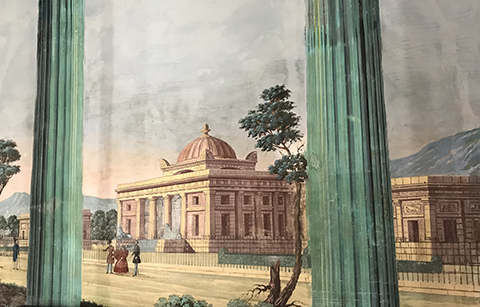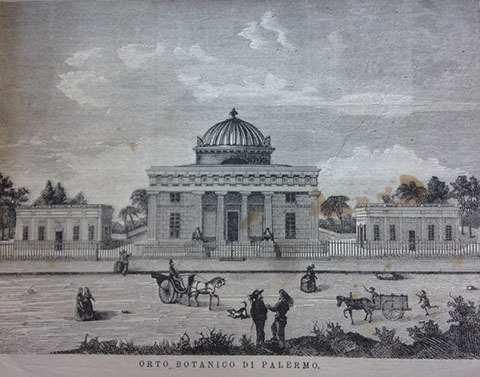History
The Palermo Botanical Garden dates back to the late 18th century, the beginning of a historical period for the Kingdoms of Naples and Sicily characterized by numerous reforms inspired by European Enlightenment culture.
The foundation of the Royal Academy of Studies of Palermo in 1779, now the University, was an important event during this period. The Academy founded the Faculty of Natural History and Botany and received permission from the City senate to use a small piece of land near the ramparts of Porta Carini. The land was to become a Botanical Garden where "simples", i.e. medicinal plants, would be displayed and cultivated for teaching purposes.
In 1781, the Botanical Garden was located near the ramparts where the public powder keg was once kept. However, soon the allotted space became cramped and inadequate for teaching, and it was not possible to develop it any further. That's why the Garden was relocated just a few years after its foundation. The Saint Erasmus plane was chosen as the new site, in an allotment of the Gallo vineyards, owned by Duke Ignazio Vanni d'Archirafi, next to Villa Giulia, a public park founded in 1777.
Construction of the new Garden began on February 22nd, 1789. After six years, work was finished and the Garden was solemnly inaugurated in the December of 1795.
The Garden's first director was Giuseppe Tineo (1795-1812). The newly inaugurated garden was only 1,200 square meters large. Initially, the entrance was from the road that connected to the Sant'Antonio Boulevard (today via Lincoln), on the Saint Erasmus plane. It separated the Garden from Villa Giulia. After the Gymnasium was completed, it was possible to access the Garden from the current entrance, in front of the new monumental buildings.
The first Garden had four rectangular sections (quartini) that were separated by two orthogonal pathways. The collections in the quartini were organized by Bernardino da Ucria, according to the Linnaean system of plant classification. Fountains and pools further embellished the Garden, including the magnificent Aquarium on the southern end, donated by the archbishop of Palermo, Filippo Lopez y Royo.
The group of monumental buildings included the Gymnasium, the central building and home of the Schola Regia Botanices. Inside, there was an octagonal lecture hall, a study hall, an Herbarium and the living quarters for the director.
Two smaller pavilions flank the Gymnasium, the Calidarium and Tepidarium. Except for the Aquarium, all of these were built according to the design of the French architect, Leòn Dufourny. However, due to political pressure, he was forced to return to France in 1793 and could not participate in the completion of the Garden nor in the subsequent inauguration.
Between 1796 and 1820, various additions were made to the Garden, giving it the structure that would be maintained until 1896. Later, the boulevard separating the Garden from Villa Giulia was also incorporated.
The exchange and consequent expansion would not take place until 1906, under the director Antonino Borzì.
With the further acquisition of a piece of land previously used as the municipal nursery and sold by the City in compensation for the part of the Garden bordering Via Archirafi, the Botanical Garden finally reached its current size. In addition to being responsible for the much-desired expansion in 1906, we also owe the creation of the Colonial Garden in 1913 to Antonino Borzì.


Orto Botanico
Università degli Studi di Palermo
Via Lincoln, 2
90133 PALERMO, Italia
Codice Fiscale 80023730825, Partita IVA 00605880822
+39 91 23891236
botanica@unipa.it

